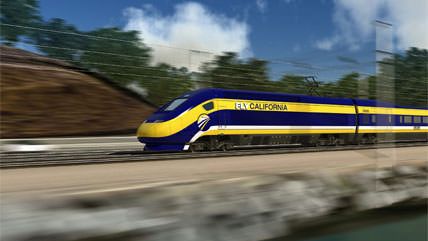California Officials Dread Rail Project Trial
The $68 billion high-speed boondoggle may not comply with its legal promise.

SACRAMENTO — Those readers who are familiar with Judge Gideon Tucker's words that "No man's life, liberty, or property are safe while the legislature is in session," might chuckle that two good-news-for-taxpayers stories came out of Sacramento last week. They came, coincidentally, as legislators had left town to enjoy their spring break.
The first came from the Brown administration, which announced its support for a revised rainy-day fund ballot measure that would set aside surpluses in boom years and use them to soften the blow during downturns. If the Brown plan is approved, the state will have new sources of cash that can be used to pay down debts and liabilities.
The second came from a California appeals court. It rejected a motion by the California High Speed Rail Authority to overturn a decision that slows its $68-billion rail plan. The ruling has set the stage for something state officials have long been dreading: a trial about whether the current rail project complies with the legal promises in the initiative that created it.
The two issues are related in a broad sense. The governor is looking for funds that could, in part, make a dent in the state's long-term liabilities, but he has championed this new rail idea that will ramp up debt spending. Perhaps the courts will save the governor from himself.
Experts at a state Senate hearing late last month argued that the current rail price tag is far below its likely cost – not surprising, given the cost overruns that are typical on virtually every major infrastructure project built anywhere. Critics wonder whether a new round of debt spending is wise before the state has gotten its last rounds under control.
In 2008, voters gave the OK for the state to spend nearly $10 billion in bonds to finance the initial construction of a rail system that promised to take riders from Los Angeles to San Francisco in 2 hours and 40 minutes. But they approved a carefully drafted initiative that included a host of taxpayer protections, which are now the subject of the litigation. Even the father of the rail project, former state Sen. Quentin Kopp, has argued to the court that the current plan doesn't resemble the one voters approved.
Previously, Sacramento Superior Court Judge Michael Kenny barred the state from spending the $10 billion until it provided a financial plan (rather than "theoretical possibilities") that properly identified income streams for the rail plan's initial segment. Last week, the court rejected the authority's attempt to toss out a portion of the decision dealing with other promises made in 1A.
"Despite the fundamental promise of Proposition 1A to provide a genuine high speed rail system for this state, the authority completely changed that goal by adopting a blended system," argues the lawsuit by Kings County and two county residents. The "blended" approach would mean that trains would, in some places, share routes with slower commuter trains – making it highly unlikely that the trains could comply with the promised trip times.
The initiative also assured voters that the system would not need an operating subsidy. The lawsuit (and most observers) contends that it will need such subsidies and argues that the authority's "wildly exaggerated figures on costs, ridership, train speed … demonstrate a credibility problem that taints the entire project." It will be useful to examine the project's credibility in court.
So far, the courts are siding with the rail line's Kings County critics. Its legislative supporters have discussed plans to use the fees generated from the state's cap-and-trade system to provide a dedicated funding stream for the rail line and other "green" projects.
In her legal brief, Attorney General Kamala Harris argued, "The trial court lost sight of the purpose of the Bond Act, which is to build a high-speed-rail system that will foster the future prosperity of the State. The Bond Act must be reasonably interpreted to achieve that purpose." She said the court has imposed a "straitjacket."
But is the specific, legal language in a voter-approved initiative a binding law or a mere suggestion? If the courts agree with Harris, then the legislature and state agencies will have much more latitude to use taxpayer funds in a way that even Tucker might not have envisioned.


Show Comments (28)